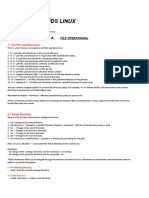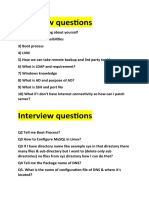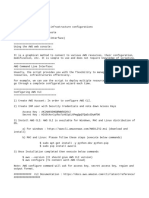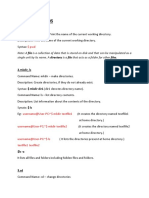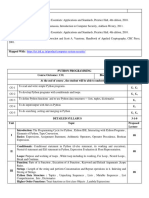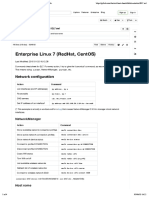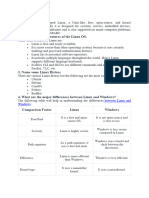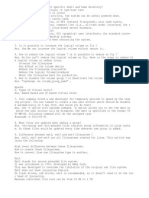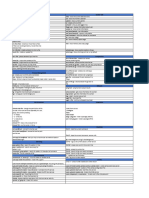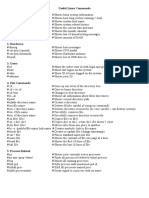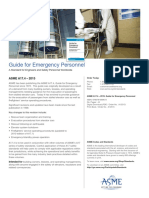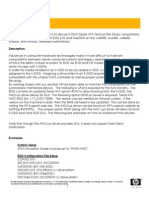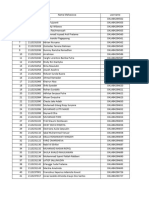0% found this document useful (0 votes)
391 views9 pagesLINUX Commands
The document provides a list of common Linux commands and their uses. Some key commands include:
- who am i - to check the user ID
- hostname - to view the host name
- uname - to check the operating system name and version
- date - to view the system date and time
- ls - to list files in a directory
- cd - to change directories
- mkdir - to create new directories
- rm - to delete files
- cat - to view the contents of a file
- grep - to search for text within files
It also includes commands for package management, networking, editing files, and using Git.
Uploaded by
yaswanth ReddyCopyright
© © All Rights Reserved
We take content rights seriously. If you suspect this is your content, claim it here.
Available Formats
Download as TXT, PDF, TXT or read online on Scribd
0% found this document useful (0 votes)
391 views9 pagesLINUX Commands
The document provides a list of common Linux commands and their uses. Some key commands include:
- who am i - to check the user ID
- hostname - to view the host name
- uname - to check the operating system name and version
- date - to view the system date and time
- ls - to list files in a directory
- cd - to change directories
- mkdir - to create new directories
- rm - to delete files
- cat - to view the contents of a file
- grep - to search for text within files
It also includes commands for package management, networking, editing files, and using Git.
Uploaded by
yaswanth ReddyCopyright
© © All Rights Reserved
We take content rights seriously. If you suspect this is your content, claim it here.
Available Formats
Download as TXT, PDF, TXT or read online on Scribd
/ 9





